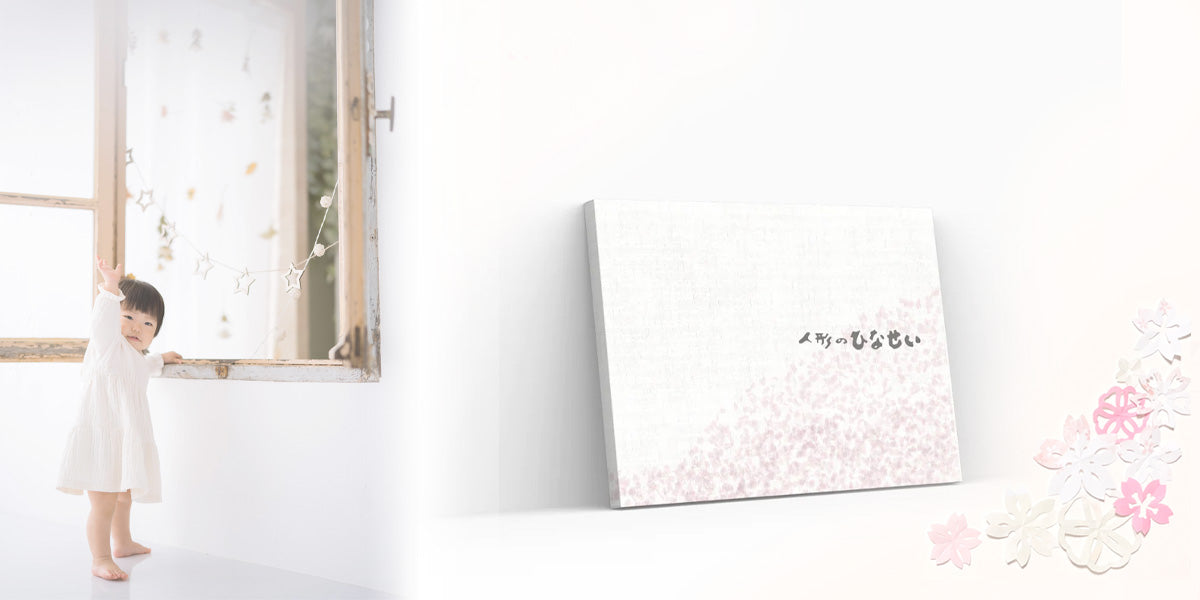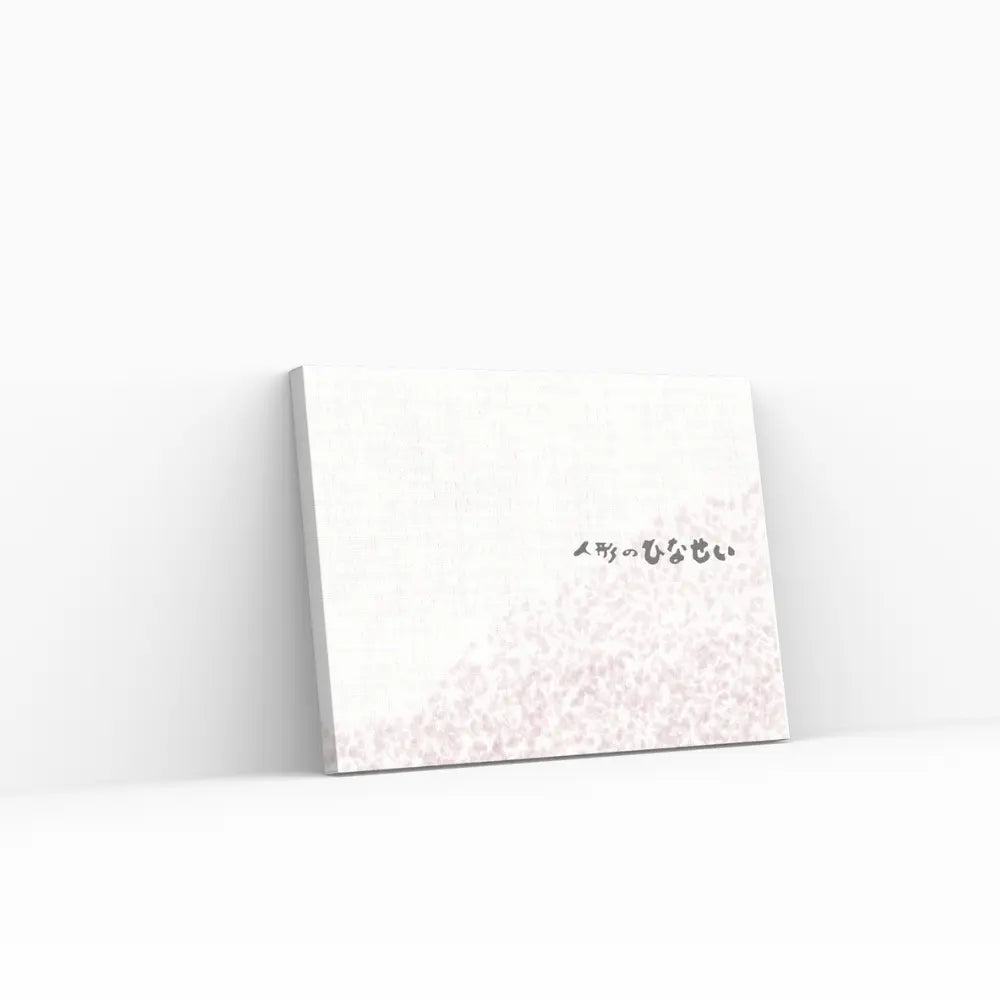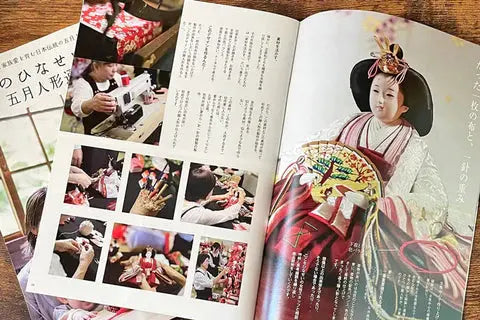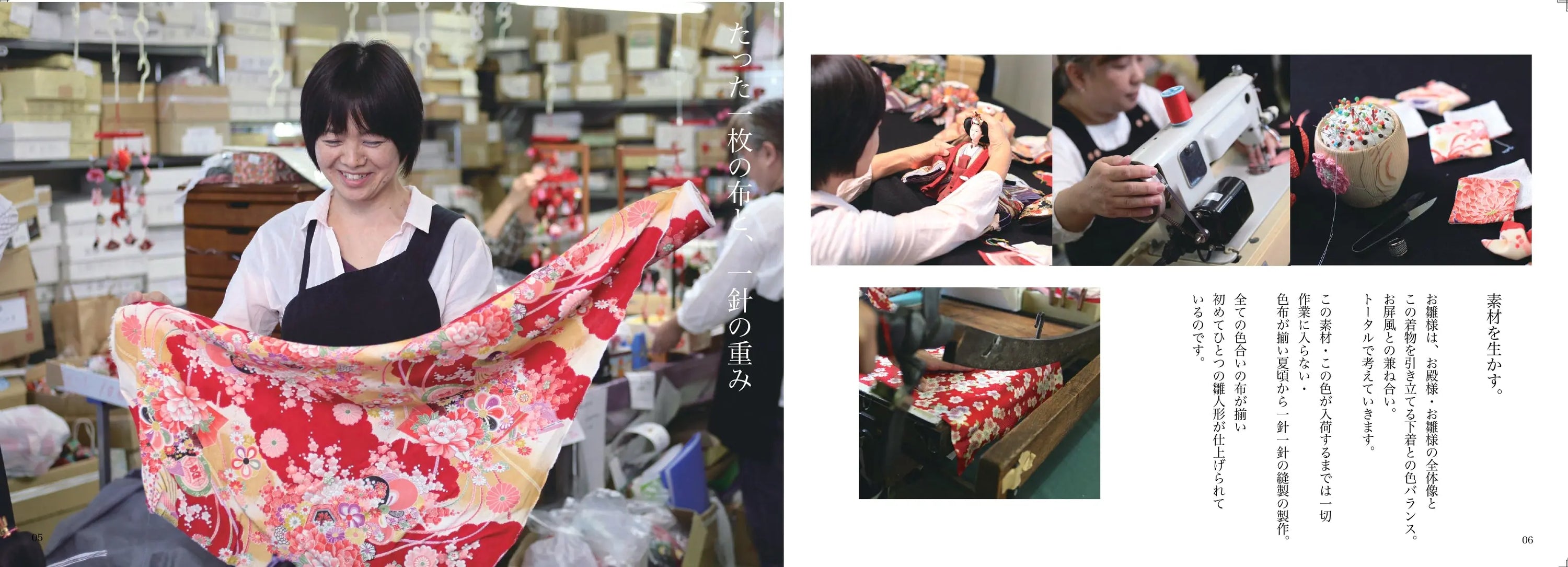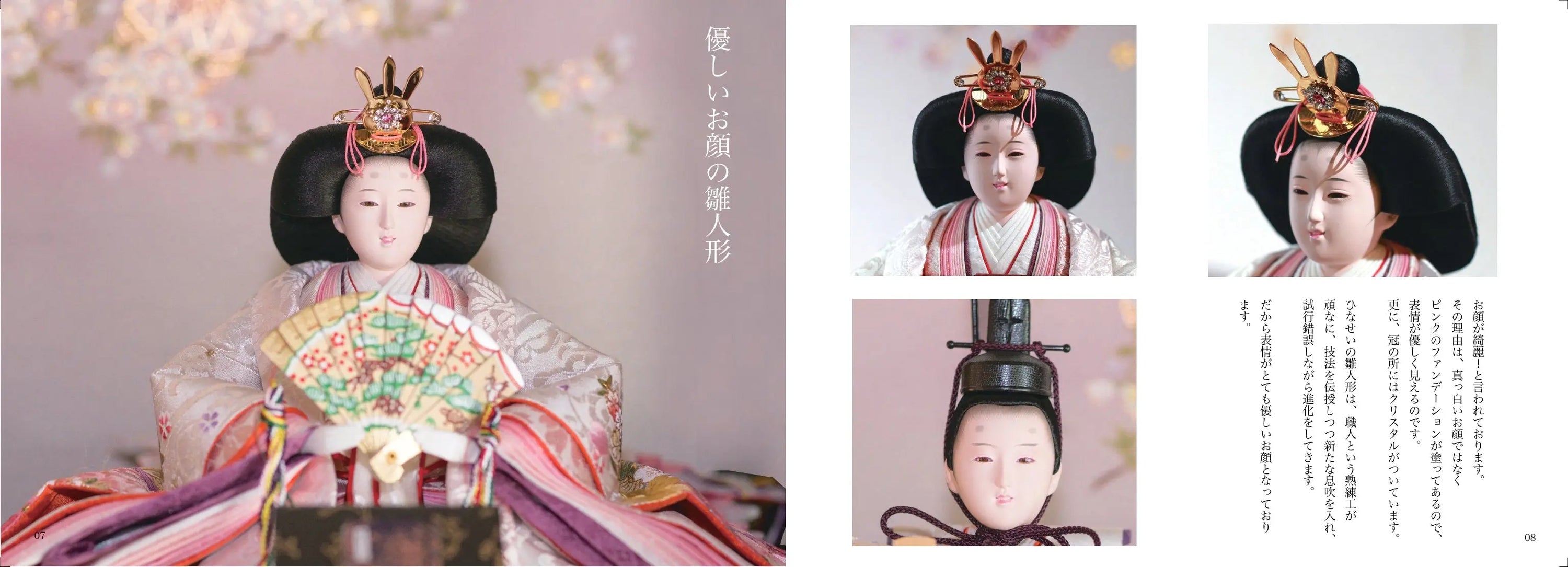Why is Hinamatsuri celebrated on April 3rd in some regions?
Some people think that Hinamatsuri is on March 3rd,
In fact, in a few areas of Japan, Hinamatsuri is celebrated on April 3rd .
Why does that region celebrate Hinamatsuri on April 3rd of the lunar calendar?
Are you still going now?
I will explain to those who are wondering.

---- table of contents ----
Click below to jump
5. Hinamatsuri is celebrated according to the lunar calendar! When should you display your Hina dolls?
~Explaining the correct way to decorate Hina dolls for the Girls' Festival~
1. What is the difference between Hinamatsuri and the lunar calendar? A complete look at the history and customs
A thorough explanation of the differences between Hinamatsuri and the lunar calendar
Hinamatsuri is one of Japan's traditional events.
It is held every year on March 3rd to pray for the healthy growth of girls.
This is also known as the Peach Festival .
It is one of the festivals held to pray for health and happiness as the seasons change.
Especially in areas where it is celebrated according to the lunar calendar,
It is often held on April 3rd after spring farm work.
This date is based on nature and the rhythm of life.
The origin of Hinamatsuri is in the ancient Chinese festival "Joshi no Sekku"
This was a ritual to ward off evil spirits by purifying the body in the river.
This custom was introduced to Japan and became established as "Nagashibina" during the Heian period.
Gradually it developed into its current form.
Peach blossoms are often used at the Girls' Festival,
This is because peach blossoms were believed to ward off evil spirits .
In Japan, nature worship and the culture of praying for the safety of one's family are closely linked.
Hinamatsuri is also part of this.
2. What is Hinamatsuri, celebrated on April 3rd of the lunar calendar? Learn about regional differences
What is Hinamatsuri, celebrated on April 3rd of the lunar calendar?
In Japan, Hinamatsuri is usually celebrated on March 3rd.
In some areas, it is celebrated on April 3rd, based on the lunar calendar.
Especially in agriculturally active areas,
It is generally celebrated after the warmth of spring arrives, avoiding peak agricultural work season.
This celebration based on the lunar calendar is
Accurately capture the change of seasons,
It symbolizes the Japanese culture of living in harmony with the rhythm of nature.
Hinamatsuri, which is held on April 3rd of the lunar calendar,
By being sensitive to changes in nature,
It has become a ritual to pray for the happiness of the family and the health of children .
Each region has its own unique events and customs,
For example, in some regions, the Nagashi Hina festival is popular,
On the other hand, urban areas tend to have simpler rituals.

3. What is the origin of Hinamatsuri and why is it celebrated according to the lunar calendar? An ancient custom
The origin of Hinamatsuri and why it is celebrated according to the lunar calendar
Hinamatsuri is a traditional Japanese event that has continued since the Heian period.
Its origin is said to be the ancient upper class game "Hina-asobi."
This custom began with displaying girl dolls.
Gradually, it began to be celebrated in families,
Especially during the Edo period, elaborate tiered stands became common.
The reason for celebrating according to the lunar calendar is
This is to capture the change of seasons more accurately,
Since April 3rd on the lunar calendar often corresponds to March 3rd on the Gregorian calendar,
In some regions, the custom of celebrating in April to coincide with the arrival of spring remains deeply rooted.
Festivals based on the lunar calendar emphasize harmony with nature,
It reflects a deep part of Japanese culture, which values a sense of the seasons.
4. What is the Nagashibina Festival? A thorough introduction to the ancient traditional ritual
What is the Hinamatsuri Nagashi Hina Festival?
Nagashi Hina is a ritual in which dolls made of paper or grass are floated down a river to ward off evil spirits.
This ritual is an ancient Chinese custom of warding off evil spirits that was introduced to Japan.
During the Heian period, it began to be performed as a court ceremony.
Nowadays, Nagashi Hina remains a local tradition,
This ritual is especially performed at rivers and ponds during the Hinamatsuri festival on the lunar calendar .
By entrusting the misfortunes and disasters of the family to the Hina dolls and letting them float down the river,
It is meant to prepare for the new spring.
Nagashi Hina is still practiced in many areas today,
The community can be seen coming together to pray for the safety of their families .

5. Hinamatsuri is celebrated according to the lunar calendar! When should you display your Hina dolls?
Celebrating Hinamatsuri according to the lunar calendar!
The Hina dolls , which can be said to be the main attraction of Hinamatsuri,
It's not just about decorating, but the timing and cleanup are also important.
In areas based on the lunar calendar, Hinamatsuri is celebrated on April 3rd instead of March 3rd.
The time for displaying Hina dolls also follows the lunar calendar schedule.
It is usually considered best to decorate after the beginning of spring .
This principle remains the same even when celebrating according to the lunar calendar.
In particular, on a girl's first Doll's Festival , Hina dolls are displayed to pray for the child's healthy growth.
You also need to be careful about tidying up.
It is considered best to clean up as soon as possible after the Hinamatsuri festival is over.
There is a superstition that if you delay cleaning up, your daughter's marriage will be delayed .
This is merely an ancient belief, and in modern times this way of thinking is gradually fading away.
6. Diamond-shaped rice cakes and Hina arare are essential for Hinamatsuri! The meaning behind their colors and shapes
Diamond-shaped rice cakes and Hina arare are essential for Hinamatsuri.
Two of the traditional dishes that are essential for Hinamatsuri are hishimochi and hina arare .
Hishimochi is a layer of rice cakes in three colors : green, white, and pink.
Each color has a special meaning.
Green represents "health," white represents "purity," and pink represents "protection from evil."
These combined represent a wish for the health and happiness of the family .
On the other hand, Hina Arare is
It is a small rice cake decorated with colorful colors,
The flavor varies depending on the region, with some being sweet and others being salty.
In the Kanto region, sweet seasonings are the norm,
In the Kansai region, it is said to be salty.
Hina arare is a way of expressing gratitude for the blessings of nature and the changing seasons .
It is traditionally eaten by families during the Doll's Festival.
These foods are not just decorations or snacks;
It has a deep meaning rooted in traditional Japanese culture.

7. The difference between Hinamatsuri and Momo no Sekku! A detailed explanation of the history and customs of the festivals that welcome spring
The difference between Hinamatsuri and Momo no Sekku
The words "Girl's Festival" and "Peach Festival" are often used synonymously,
There are some differences when tracing its origins and background.
Hinamatsuri is a traditional Japanese event that prays for the healthy growth of girls.
The Peach Festival is one of the five seasonal festivals that are celebrated at the change of seasons.
The reason why the Peach Festival was set on March 3rd is
The peach blossoms bloom just at that time.
This is because peaches have been a symbol of longevity and protection from evil since ancient times .
On this day, families and communities celebrate together and hold events to pray for the girl's growth.
Also, at this time of year when spring arrives,
It also has the meaning of celebrating the change of seasons,
It also serves as a ritual to welcome the beginning of a new year with the arrival of spring.
In particular, peach blossoms have been used since ancient times as talismans,
The Doll Festival has also been cherished as a day to pray for the health and safety of family members .
8. What is the old Hinamatsuri? Regional differences and how to celebrate the festival
What is the old festival of Hinamatsuri?
Hinamatsuri, which is celebrated based on the old seasonal festivals ,
The format and customs vary greatly from region to region.
For example, in agriculturally active regions, Hinamatsuri is often celebrated on April 3rd, after the spring farm work has finished.
Festivals based on the lunar calendar remain deeply rooted.
In particular, in cold regions, it is customary to hold Hinamatsuri in anticipation of the arrival of spring .
As we approach the Doll Festival, we should be grateful for the blessings of nature.
A ceremony is held to celebrate the growth of a girl.
Each region has its own unique customs,
For example, there are places where the Nagashi Hina Ceremony is held on a large scale,
There are also places where local shrines and temples hold special events.
The format of Hinamatsuri varies from region to region and is rooted in the local climate and culture.
You can see that traditions unique to each region are being passed down .

9. Hinamatsuri, the first Doll's Festival! What is the correct way to celebrate and pray for a girl's growth?
The first Hinamatsuri festival!
The first Doll Festival is the first Hinamatsuri that a girl celebrates after her birth, and is celebrated with particular pomp.
On this day, people pray for the healthy growth and health of girls.
Families and relatives gather together to celebrate.
Of course, we decorate the Hina dolls,
There are also traditional ceremonies and events that are unique to the first festival.
Generally, families and relatives gather together,
There will be a meal and an exchange of gifts .
The meal includes the standard Hinamatsuri dishes such as chirashi sushi and clam soup,
Especially for the first Doll Festival, lavish preparations are often made.
In addition, as a celebration, grandparents and relatives
Hina dolls and other items related to the Hinamatsuri festival are sometimes given as gifts .
In particular, Hina doll sets are highly valued as gifts,
It will be treasured as a lifelong keepsake for the girl.
The first festival is an important event that deepens family ties,
For parents, this is an important event that marks a milestone in their child's growth.

Beautiful Hina dolls can be displayed in and out of a glass display case [Harukaze Hina]
10. Celebrate Hinamatsuri at home! Deepen family ties with the traditional festival of the Peach Blossom Festival
Celebrate Hinamatsuri at home! Old seasonal festivals
Hinamatsuri is an event where families gather together to celebrate the growth of girls.
It's also an important time to deepen family bonds .
In particular, Hinamatsuri, which is celebrated based on the old seasonal festivals ,
This event is held after the spring farm work is over, and families gather together to feel connected to the local community.
It will be an opportunity to further strengthen ties between family members and relatives.
On this day, families decorate Hina dolls ,
By gathering around the dining table and enjoying peach blossoms and traditional cuisine,
The whole family comes together to celebrate the girl's future.
Also, when decorating Hina dolls,
It is an opportunity to teach children about its history and meaning,
It also plays a role in passing on traditional culture to the next generation.
During this period, communication within the family increases, and the parent-child relationship deepens.
Celebrating Hinamatsuri with the whole family will be a memory that will last a lifetime .
By celebrating Hinamatsuri, children can experience Japanese traditions and culture firsthand ,
It will be a valuable experience that will make you realize that you are being cherished and protected within your family.
11. Dig into the history of Hinamatsuri! What is the background and significance of celebrating it on the old seasonal festival?
Dig into the history of Hinamatsuri!
The history of Hinamatsuri dates back to the Heian period.
In areas where it is celebrated according to the lunar calendar , there is a deep connection to agriculture behind it.
Hinamatsuri, celebrated on the old seasonal festival ,
It is often held after planting crops to avoid the busy agricultural season in spring, and is therefore rooted in lifestyle habits based on the rhythms of nature.
In particular, in rural areas, April 3rd is considered the time for Hinamatsuri ,
It is an important occasion to give thanks for the blessings of nature and pray for the prosperity of the family.
In Japan's agriculture-based society,
The Hinamatsuri festival according to the lunar calendar is also an important ceremony to confirm ties with family and the community .
It is an important day to celebrate the arrival of spring and pray for safety in the new year.
The Hinamatsuri festival on the lunar calendar is not just a celebration of the healthy growth of girls,
It symbolizes a culture in which the entire region comes together and lives in harmony with the cycles of nature .
Its significance is being reassessed even today.
12. Summary: The importance of the lunar calendar Hinamatsuri and the value of the festival in modern times
Summary: The Importance of the Lunar Calendar Hinamatsuri
Hinamatsuri is not just a traditional event, but an important opportunity to deepen family ties and connections within the local community.
Especially on Hinamatsuri, which is celebrated according to the lunar calendar ,
The Japanese lifestyle and culture that values coexistence with nature remains strong.
Even today, Hinamatsuri has not lost its value.
Deepen communication within the family
It is positioned as an important event that teaches children about traditional Japanese culture .
Especially the Hinamatsuri festival on the lunar calendar ,
They play an important role in preserving local culture and customs while passing on their value to the next generation.
It will be necessary for families and local communities to continue working together to pass on this tradition in the future.
Nowadays, the ways of decorating and celebrating Hinamatsuri have become more diverse .
Without being bound by traditional formats, it is possible to celebrate in new ways that suit your family's situation and lifestyle.
Still, the family gathered together,
The basic goal of wishing for girls' growth remains the same.
Hinamatsuri is an important traditional event that should continue into the future.

- Other articles you may be reading
What is Hinamatsuri? What should I do? Learn how to enjoy it from Japanese history
What can you actually do to enjoy Hinamatsuri?
You may be wondering what you should prepare.
Also, with just a little ingenuity, you can create some very memorable family memories.
What is Hinamatsuri? What should I do? Learn how to enjoy it from Japanese history




